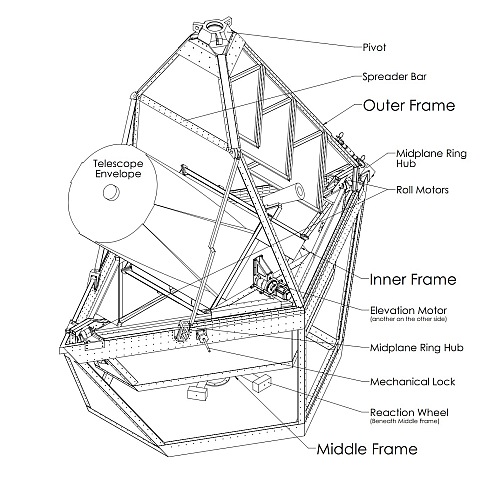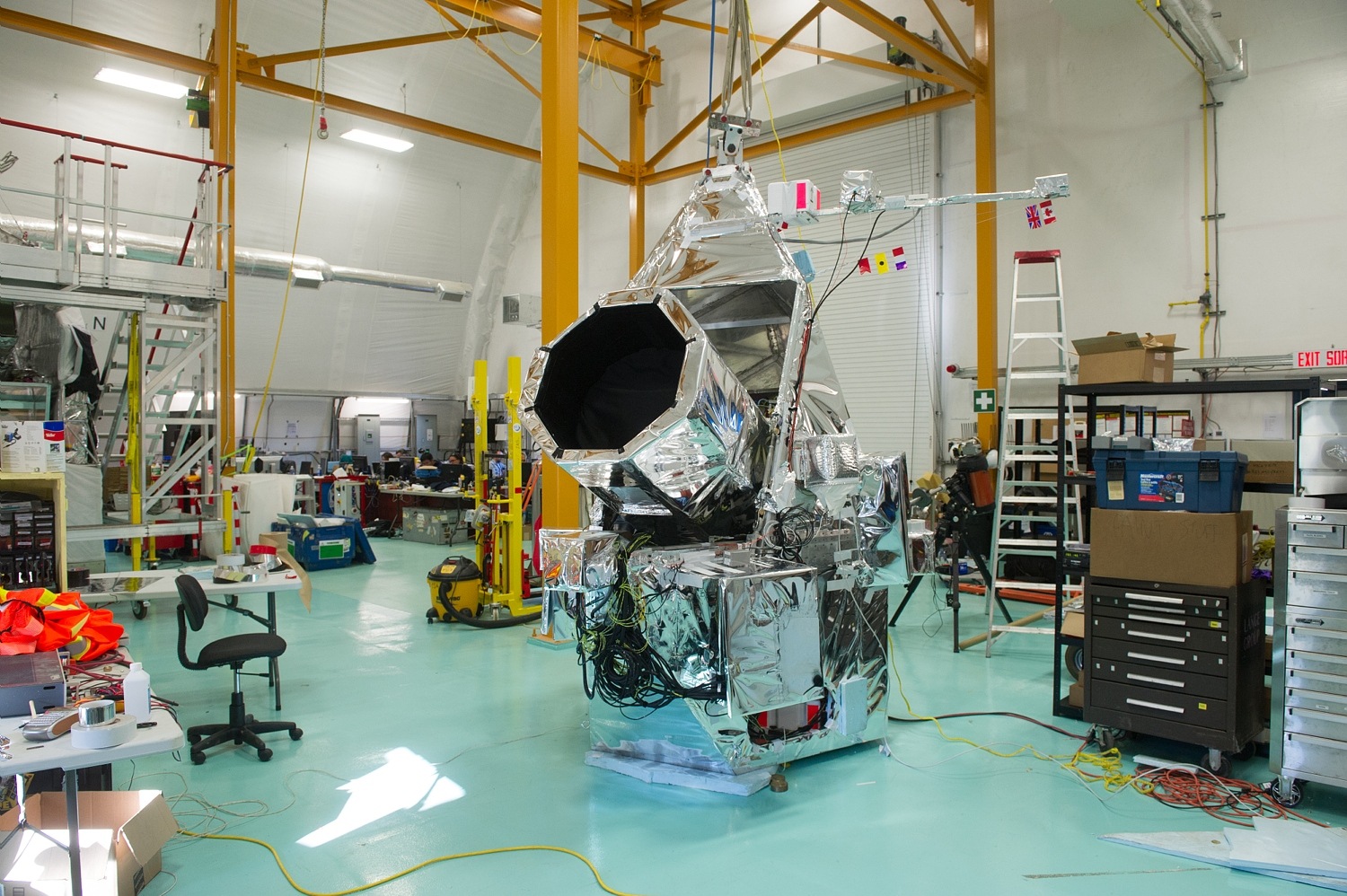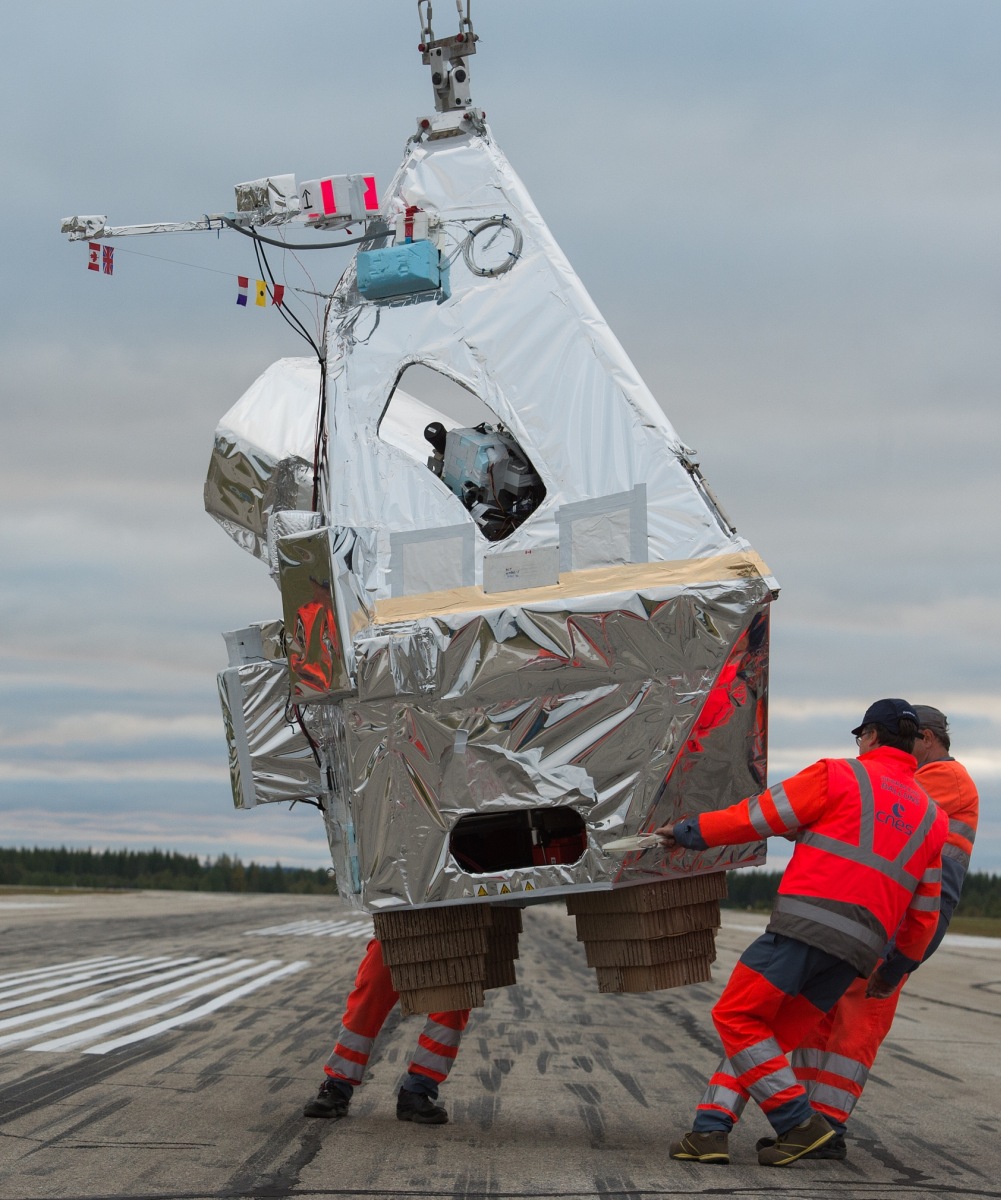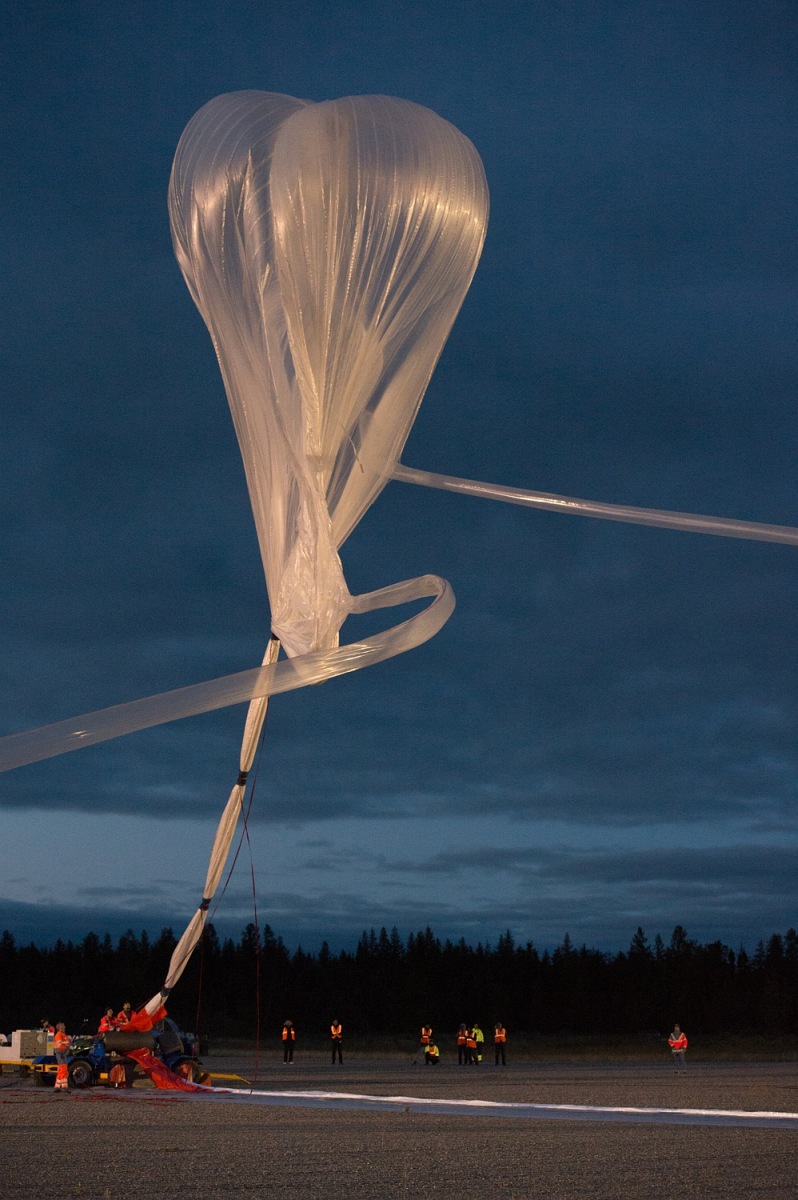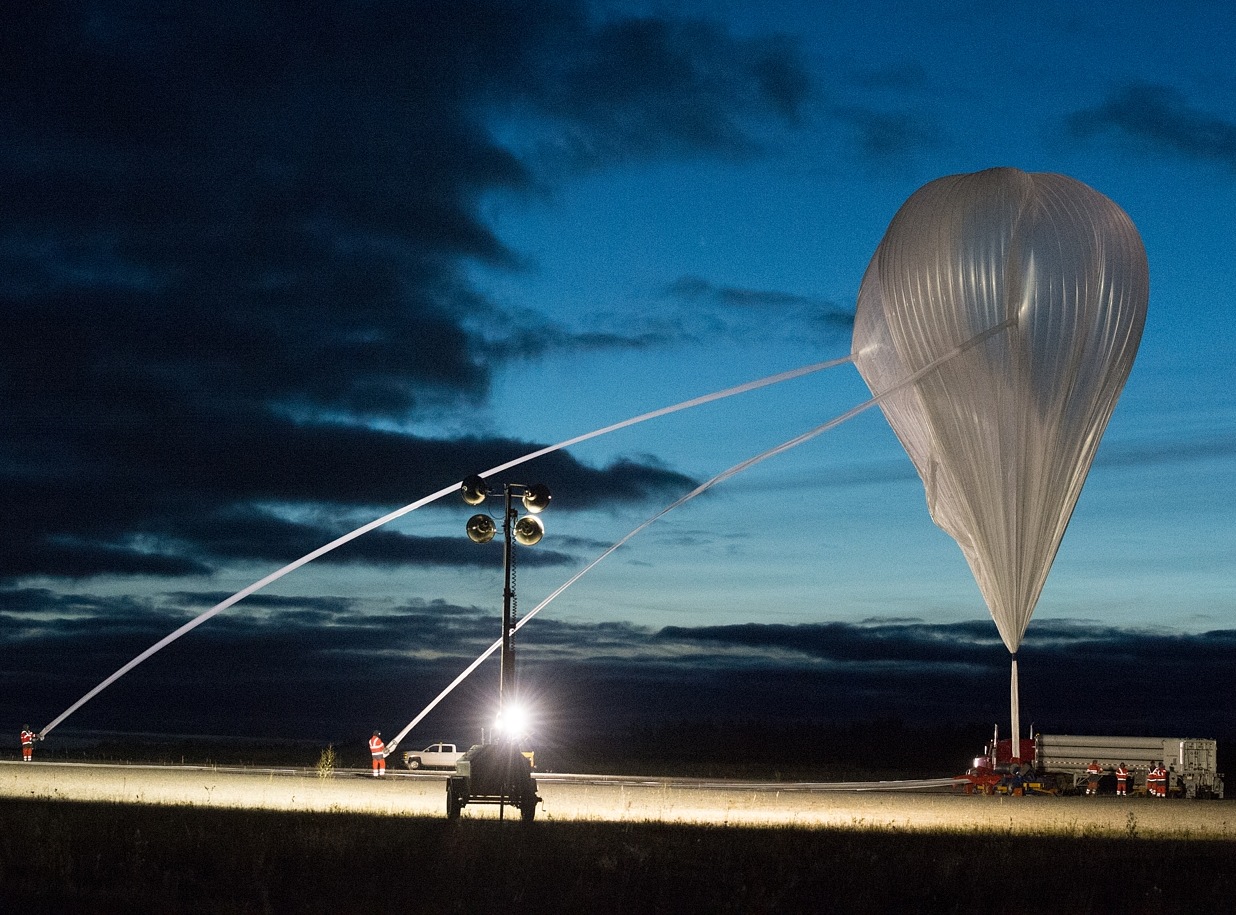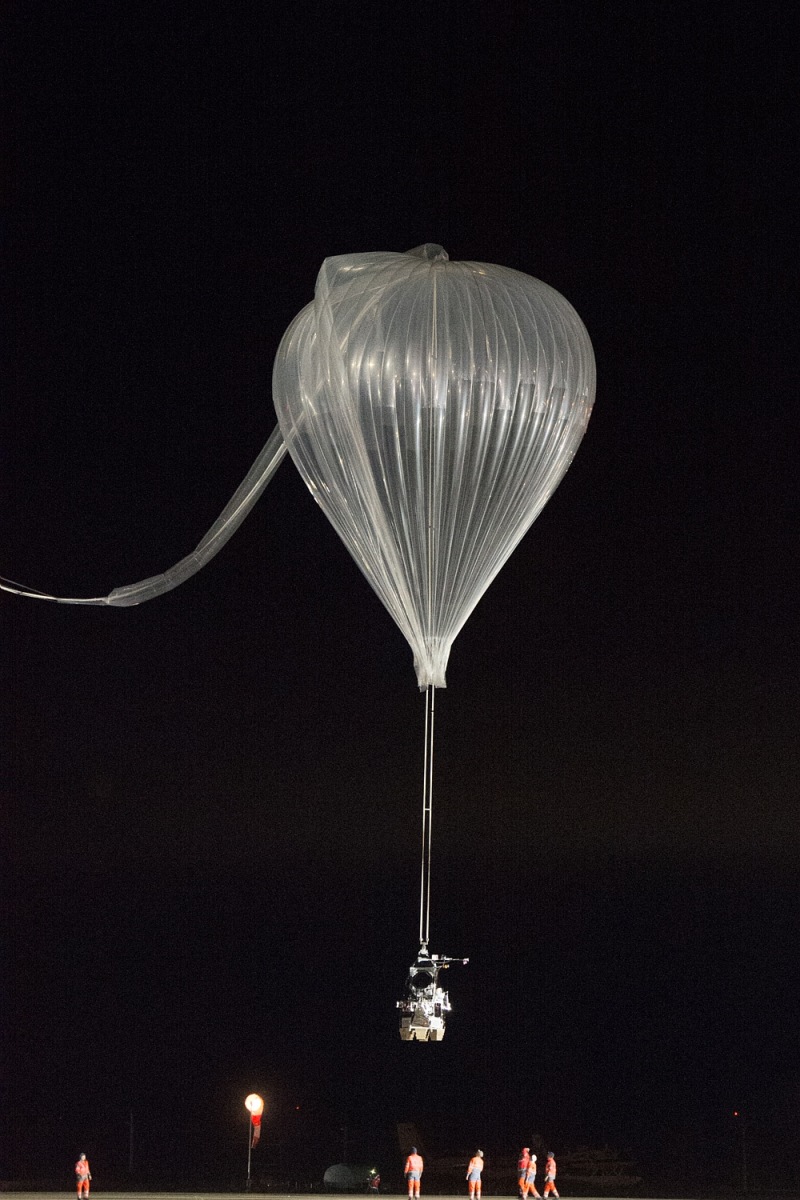Purpose of the flight and payload description
The Balloon-borne Imaging Testbed (BIT) was the prototype of an instrument designed to meet the technological requirements of high precision astronomical missions and the precursor to the development of a facility class instrument with capabilities similar to the Hubble Space Telescope known as SuperBIT. The instrument is the result of a collaboration between the University of Toronto Astrophysics Department, the Institute for Aerospace Studies (UTIAS), the Durham University Centre for Advanced Instrumentation (CfAI), and the Jet Propulsion Laboratory (JPL-NASA). The overall objective of the project is to develop, build, and test a balloon-borne telescope platform operating in the visible-to-near-UV bands (300-900 µm) that is designed to achieve 20 milliarcsecond image stability over a 0.5 degree field-of-view for integration periods ranging from 10-30 minutes. In the future the design would meet the technological requirements of astronomical missions that require a high degree of pointing accuracy and stabilization similar to current space-borne or ground-based telescope missions.
At left we can see an scheme of the instrument (click to enlarge) which houses a 0.5 meter Ritchey-Cretien-type telescope with refractive field correction optics providing a relatively wide 0.5º field-of-view. It is stabilized in all three rotational axes thanks to a specially built and innovative gondola design. The physical architecture of the BIT gondola can be broken down into three main gimballed substructures or frames, each actuated about their own orthogonal axis. The outer frame structure is actuated about the yaw #3 axis via a reaction wheel located at the base and co-actuated at the pivot connection to prevent flight train twisting and reaction wheel saturation. The middle frame is actuated relative to the outer frame about the roll axis and is physically constrained by a ±6º range. Similarly, the inner frame, which contains the telescope, optics, and the corresponding flight electronics, is actuated relative to the middle frame about the pitch #2 axis and has a full range from 20-57º relative to horizontal. Using these three gimballed frames, the attitude of the telescope on the inner frame relative to targets on the sky is fully controlled with hardware specified to stabilize the telescope to within 1-2 seconds of arc. Backend optics located at the rear of the telescope further stabilize the image on the telescope focal plane to 0.05 seconds of arc according to the desired specifications.
Launch of the balloon and onboard camera recording at float and landing
Details of the balloon flight
Balloon launched on: 9/18/2015
Launch site: Timmins Stratospheric Balloon Base, Ontario, Canada
Balloon launched by: Centre National d'Etudes Spatiales (CNES)
Balloon manufacturer/size/composition: Zero Pressure Balloon model 402z Zodiac 402.000 m3
Flight identification number: NIMBUS-5
End of flight (L for landing time, W for last contact, otherwise termination time): 9/19/2015
Balloon flight duration (F: time at float only, otherwise total flight time in d:days / h:hours or m:minutes - ): 11 h 26 m
Landing site: In North Quebec, Canada
Campaign: STRATO SCIENCE 2015
Payload weight: 744 kg
Overall weight: 2146 kg
External references
- BIT website University of Toronto
- Assessment of the Last Two STRATO SCIENCE Campaigns in Timmins, Canada SpaceOps 2016 Conference, SpaceOps Conferences, (AIAA 2016-2611)
- BIT 2015 Flight from Timmins University of Toronto website
- BIT test flight 2015 Richard Massey website
- Overview, design, and flight results from SuperBIT: a high-resolution, wide-field, visible-to-near-UV balloon-borne astronomical telescope SPIE Astronomical Telescopes and Instrumentation 2018 conference
- Precise Pointing and Stabilization Performance for the Balloon-borne Imaging Testbed (BIT): 2015 Test Flight
- STRATO SCIENCE 2015 : Essai transformé pour BIT ! Coverage of the flight at CNES website
- The design and development of a high-resolution visible-to-near-UV telescope for balloon-borne astronomy: SuperBIT SPIE Astronomical Telescopes and Instrumentation 2016
- The Frequency and Modal System Identification of the Balloon-borne Imaging Testbed Ph.D Thesis by Lun Li, University of Toronto (2015)
13004If you consider this website interesting or useful, you can help me to keep it up and running with a small donation to cover the operational costs. Just the equivalent of the price of a cup of coffee helps a lot.

